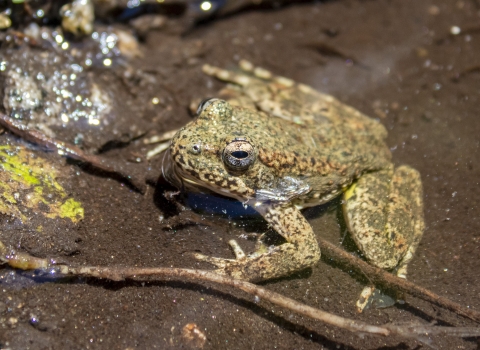The U.S. Fish and Wildlife Service has completed initial reviews on petitions to list two species under the Endangered Species Act (ESA): the Bethany Beach firefly and the Gulf Coast solitary bee. The Service has concluded there is substantial information available to begin in-depth reviews to determine whether the petitioned actions are warranted.
The Bethany Beach firefly is a bioluminescent beetle known to occur only in Delaware. It emerges during summer in unique freshwater wetlands that develop behind dunes along the Atlantic Ocean beaches. This firefly is Delaware’s sole recognized endemic species. It can be distinguished by the double green flash given off by adult males in search of mates.
The Service finds the petition to list the Bethany Beach firefly presented substantial information on potential threats associated with light pollution, invasive species invasive species
An invasive species is any plant or animal that has spread or been introduced into a new area where they are, or could, cause harm to the environment, economy, or human, animal, or plant health. Their unwelcome presence can destroy ecosystems and cost millions of dollars.
Learn more about invasive species , pesticide use and the effects of climate change climate change
Climate change includes both global warming driven by human-induced emissions of greenhouse gases and the resulting large-scale shifts in weather patterns. Though there have been previous periods of climatic change, since the mid-20th century humans have had an unprecedented impact on Earth's climate system and caused change on a global scale.
Learn more about climate change (sea level rise, increased incidence of severe storms, and increased temperature and phenology changes).
The Gulf Coast solitary bee is a fuzzy yellow-and-black-striped bee restricted to the sandy barrier islands and landward dunes along the northern margins of the Gulf of Mexico that extend from Horn Island, Mississippi, eastward to St. Andrew’s Bay in northwestern Florida. This bee is a floral specialist that feeds only on the plant known as the Coastal Plain honeycomb head. The Service finds the petition to list the Gulf Coast solitary bee presented substantial information on potential threats associated with effects from climate change, pesticide spraying, urbanization and loss of pollination mutualism (preeminent association of two interactors, plant and insect, reciprocally benefiting).
The ESA allows citizens to petition the Service to add species to the federal List of Endangered and Threatened Wildlife and Plants, remove species from the list, and to reclassify species already on the list.
The Federal Register docket numbers and links for the substantial petition findings in this batch are:
Species | Range | Docket Number | Docket link |
Bethany Beach firefly | DE | FWS–R5–ES–2019–0088 | https://www.regulations.gov/docket?D= FWS-R5-ES-2019-0088 |
Gulf Coast solitary bee | AL, MS, FL | FWS–R4–ES–2019–0089 | https://www.regulations.gov/docket?D= FWS-R4-ES-2019-0089 |
The notice for the above findings will be available in the Federal Register Reading Room on December 18, 2019 at https://www.federalregister.gov/public-inspection on the 2019 Notices link under Endangered and Threatened Wildlife and Plants.
For more information on the ESA listing process, including 90-day findings and status reviews, please go to www.fws.gov/endangered/esa-library/pdf/listing.pdf.



